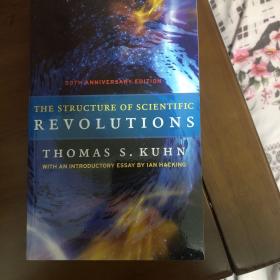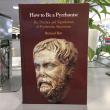
The Structure of Scientific Revolutions:50th Anniversary Edition
¥ 90 5.4折 ¥ 166.6 全新
仅1件
作者Thomas S.、Ian Hacking 著
出版社University of Chicago Press
出版时间2012-04
装帧平装
上书时间2022-11-20
- 最新上架
商品详情
- 品相描述:全新
图书标准信息
- 作者 Thomas S.、Ian Hacking 著
- 出版社 University of Chicago Press
- 出版时间 2012-04
- ISBN 9780226458120
- 定价 166.60元
- 装帧 平装
- 开本 其他
- 纸张 其他
- 页数 264页
- 正文语种 英语
- 【内容简介】
-
A good book may have the power to change the way we see the world, but a great book actually becomes part of our daily consciousness, pervading our thinking to the point that we take it for granted, and we forget how provocative and challenging its ideas once wereand still are. The Structure of Scientific Revolutions is that kind of book. When it was first published in 1962, it was a landmark event in the history and philosophy of science. Fifty years later, it still has many lessons to teach.
With The Structure of Scientific Revolutions, Kuhn challenged long-standing linear notions of scientific progress, arguing that transformative ideas dont arise from the day-to-day, gradual process of experimentation and data accumulation but that the revolutions in science, those breakthrough moments that disrupt accepted thinking and offer unanticipated ideas, occur outside of normal science, as he called it. Though Kuhn was writing when physics ruled the sciences, his ideas on how scientific revolutions bring order to the anomalies that amass over time in research experiments are still instructive in our biotech age.
This new edition of Kuhns essential work in the history of science includes an insightful introduction by Ian Hacking, which clarifies terms popularized by Kuhn, including paradigm and incommensurability, and applies Kuhns ideas to the science of today. Usefully keyed to the separate sections of the book, Hackings introduction provides important background information as well as a contemporary context. Newly designed, with an expanded index, this edition will be eagerly welcomed by the next generation of readers seeking to understand the history of our perspectives on science. - 【作者简介】
-
American historian and philosopher of science, a leading contributor to the change of focus in the philosophy and sociology of science in the 1960s. Thomas Samuel Kuhn was born in Cincinnati, Ohio. He received a doctorate in theoretical physics from Harvard University in 1949. But he later shifted his interest to the history and philosophy of science, which he taught at Harvard, the University of California at Berkeley, Princeton University, and Massachusetts Institute of Technology (MIT).
In 1962, Kuhn published The Structure of Scientific Revolutions, which depicted the development of the basic natural sciences in an innovative way. According to Kuhn, the sciences do not uniformly progress strictly by scientific method. Rather, there are two fundamentally different phases of scientific development in the sciences. In the first phase, scientists work within a paradigm (set of accepted beliefs). When the foundation of the paradigm weakens and new theories and scientific methods begin to replace it, the next phase of scientific discovery takes place. Kuhn believes that scientific progress—that is, progress from one paradigm to another—has no logical reasoning. Kuhn's theory has triggered widespread, controversial discussion across many scientific disciplines. - 【目录】
-
Introductory Essay by Ian Hacking
Preface
I. Introduction: A Role for History
II. The Route to Normal Science
III. The Nature of Normal Science
IV. Normal Science as Puzzle-solving
V. The Priority of Paradigms
VI. Anomaly and the Emergence of Scientific Revolutions
VII. Crisis and the Emergence of Scientific Theories
VIII. The Response to Crisis
IX. The Nature and Necessity of Scientific Revolutions
X. Revolutions as Changes of World View
XI. The Invisibility of Revolutions
XII. The Resolution of Revolutions
XIII. Progress through Revolutions
Postscript-1969
Index
— 没有更多了 —













以下为对购买帮助不大的评价